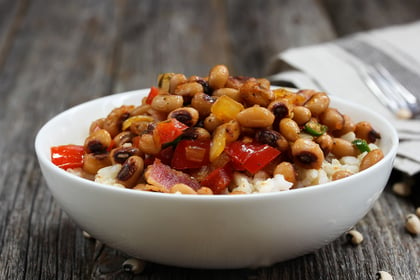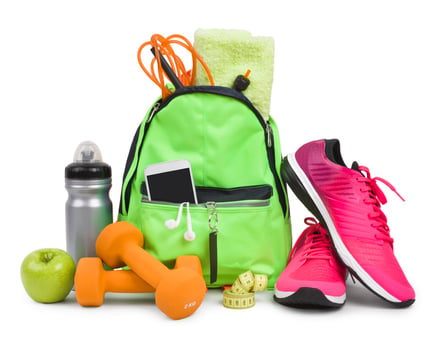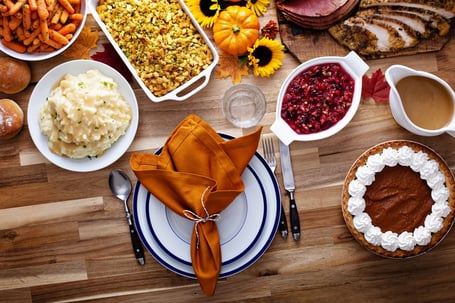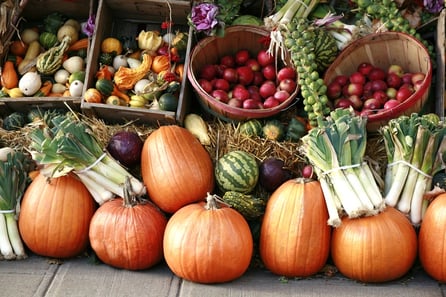 Holidays are times when you can relax and reflect, spend time with friends and family, and indulge in copious amounts of turkey, ham, mashed potatoes, and pie. Well, maybe don’t eat so much pie. But we do have plenty of reasons to not only be grateful, and to be inspired for the future.
Holidays are times when you can relax and reflect, spend time with friends and family, and indulge in copious amounts of turkey, ham, mashed potatoes, and pie. Well, maybe don’t eat so much pie. But we do have plenty of reasons to not only be grateful, and to be inspired for the future.
Top Ten Things That Inspire Me
You probably have a hundred things you are excited about for the next decade. I have compiled my personal Thomas’s Top Ten list of things I am inspired by and that make me smile.
- Good health: There’s a lot to say about good health, such as being able to do things you like to do, go places you want to visit, and experience everything life has to offer. Being in the fitness industry predisposes a person to being health-minded, but it’s not an easy road and definitely something not to be taken for granted.
- Good friends: Spending time with friends is important. Like good health, this isn’t always easy and sometimes there are roadblocks along the way. I believe my favorite place on earth is wherever my best friend is at that time.
- Pets: If you have pets, you instantly have a built-in best friend. When treated well, these little animals can give you love and affection after a long day at work, or give you the inspiration to go out and exercise when you are tired.
- Sunshine: Sunshine is such an important aspect of life that it comes in at number four on my list. Without the sunshine, there is no life. Go out on a sunny day and see for yourself. There is something to be said for rainy days too… without rain, there would be no trees, flowers, or rivers.
- Fresh air: I am grateful for fresh air, even if it’s cold and crisp. Being able to breathe well is something to be thankful for because it isn’t easy for everyone. Fresh air can improve your sleep as well as overall well-being.
- Clean water: Having a clean water source and plenty to go around is a beautiful thing. All too often, we take having clean water for granted. Our bodies need water to function well—and being able to stay outwardly clean doesn’t hurt, either.
- Good sleep: Sleeping is where we recharge our batteries. After a long day of work and play, our bodies need sleep to rebuild muscle and alleviate mental fatigue. Also, sleeping in on the weekend is okay!
- Books: I am very grateful for not only the ability to read, but also all the books that inspire me in life and work. Even further, books allow not only for education, but also relaxation. There is something to be said about someone who enjoys being an active participant in their entertainment. Also, you can multiply your happiness when you share your books with your friends.
- Music: Sometimes people can associate music and songs with nearly every aspect of their lives. You can almost define certain life events with music (what was your high school spirit song, or are there any songs that you remember from elementary school?). Also, music helps inspire and motivate people to exercise. Over the years, music may change, but the effect is still the same.
- Mountains: This can be taken both literally and metaphorically. Mountains are amazing. Thousands of years old, stoic, and everlasting, mountains can be a destination for relaxation (vacation), exercise (hiking), and relaxation. Thinking outside the box, a “mountain” can represent your own personal goal for the coming year. I am thankful for mountains because they are the ultimate reason for pursuing a healthy lifestyle.
What Inspires You?
What ideas are on your Top Ten list? I’m sure there are many I have failed to list that are as important or possibly more important than the ones I have listed. Take a few moments and jot them on a piece of paper. That’s how I started this blog!
Looking forward to a New Year and new decade is an exciting prospect. NIFS will be looking help you reach your goals, motivate you, and educate you with the most knowledgeable and expert advice available. Happy holidays and have a GREAT 2020.
This blog was written by Thomas Livengood, NIFS Health Fitness Instructor and Personal Trainer. To read more about the other NIFS bloggers, click here.


 ’Tis the season for swapping Christmas cookies, candy bowls, Hanukah dinners, holiday parties, and New Year’s Eve libations. We’ll take this month to refocus on a 10 simple ways to keep your body properly nourished and healthy this holiday season while keeping in mind that it is okay and certainly encouraged to partake in the holiday season festivities. New Year’s Resolutions are a great time to start new habits, but why not get a head start?
’Tis the season for swapping Christmas cookies, candy bowls, Hanukah dinners, holiday parties, and New Year’s Eve libations. We’ll take this month to refocus on a 10 simple ways to keep your body properly nourished and healthy this holiday season while keeping in mind that it is okay and certainly encouraged to partake in the holiday season festivities. New Year’s Resolutions are a great time to start new habits, but why not get a head start? There is no escaping the colors of the sugary candy that is around every corner. From jelly beans to chocolate bunnies and Cadbury eggs, the temptations are endless and the calories are empty.
There is no escaping the colors of the sugary candy that is around every corner. From jelly beans to chocolate bunnies and Cadbury eggs, the temptations are endless and the calories are empty. Every year on New Year’s Day my husband’s grandma makes cabbage. She says it’s good luck. I had never heard of this tradition, and then someone else told me they eat black-eyed peas for luck, also. I decided to look into it and there are actually quite a few foods that people eat every year on New Year’s Day hoping that the next year will be prosperous and lucky for them—all because of a meal they consumed on the holiday!
Every year on New Year’s Day my husband’s grandma makes cabbage. She says it’s good luck. I had never heard of this tradition, and then someone else told me they eat black-eyed peas for luck, also. I decided to look into it and there are actually quite a few foods that people eat every year on New Year’s Day hoping that the next year will be prosperous and lucky for them—all because of a meal they consumed on the holiday! Slow Cooker Pork and Sauerkraut with Apples
Slow Cooker Pork and Sauerkraut with Apples ’Tis the season for holiday traveling, holiday parties, not having as much time to hit the gym, and eating more calories than are in your average diet. Spending time with family and friends is so important over the holiday season, but taking care of your health and fitness is just as important.
’Tis the season for holiday traveling, holiday parties, not having as much time to hit the gym, and eating more calories than are in your average diet. Spending time with family and friends is so important over the holiday season, but taking care of your health and fitness is just as important. The holidays technically started on
The holidays technically started on  Not long from now, families all over America will be sitting down to a meal that looks back to that first Thanksgiving, in which the Pilgrims celebrated the harvest after a harsh winter. The year was 1621, and Governor William Bradford proclaimed a day of thanksgiving, which the colonists celebrated as a traditional English harvest feast.
Not long from now, families all over America will be sitting down to a meal that looks back to that first Thanksgiving, in which the Pilgrims celebrated the harvest after a harsh winter. The year was 1621, and Governor William Bradford proclaimed a day of thanksgiving, which the colonists celebrated as a traditional English harvest feast. It’s Halloween time, and that can only mean one thing: sugar, lots of sugar! Toward the end of summer, stores start to taunt us by placing all of the Halloween candy out on display. What’s worst of all is that the candy is in tiny, easy-to-eat servings. By the time the actual day of Halloween rolls around, we’ve already been thumbing through fun-sized candy the entire month.
It’s Halloween time, and that can only mean one thing: sugar, lots of sugar! Toward the end of summer, stores start to taunt us by placing all of the Halloween candy out on display. What’s worst of all is that the candy is in tiny, easy-to-eat servings. By the time the actual day of Halloween rolls around, we’ve already been thumbing through fun-sized candy the entire month. The air is crisp, football season is in full swing, and the plentiful bounty of summer’s gardens is all gone. Instead of reverting back to the frozen fruit and veggie staples that are typical of fall and winter, experiment with some of the tasty foods that give fall the name the harvest season!
The air is crisp, football season is in full swing, and the plentiful bounty of summer’s gardens is all gone. Instead of reverting back to the frozen fruit and veggie staples that are typical of fall and winter, experiment with some of the tasty foods that give fall the name the harvest season!
 Here are some recipes for patriotic healthy eating. Bring one of these red, white, and blue creations to your Fourth of July
Here are some recipes for patriotic healthy eating. Bring one of these red, white, and blue creations to your Fourth of July